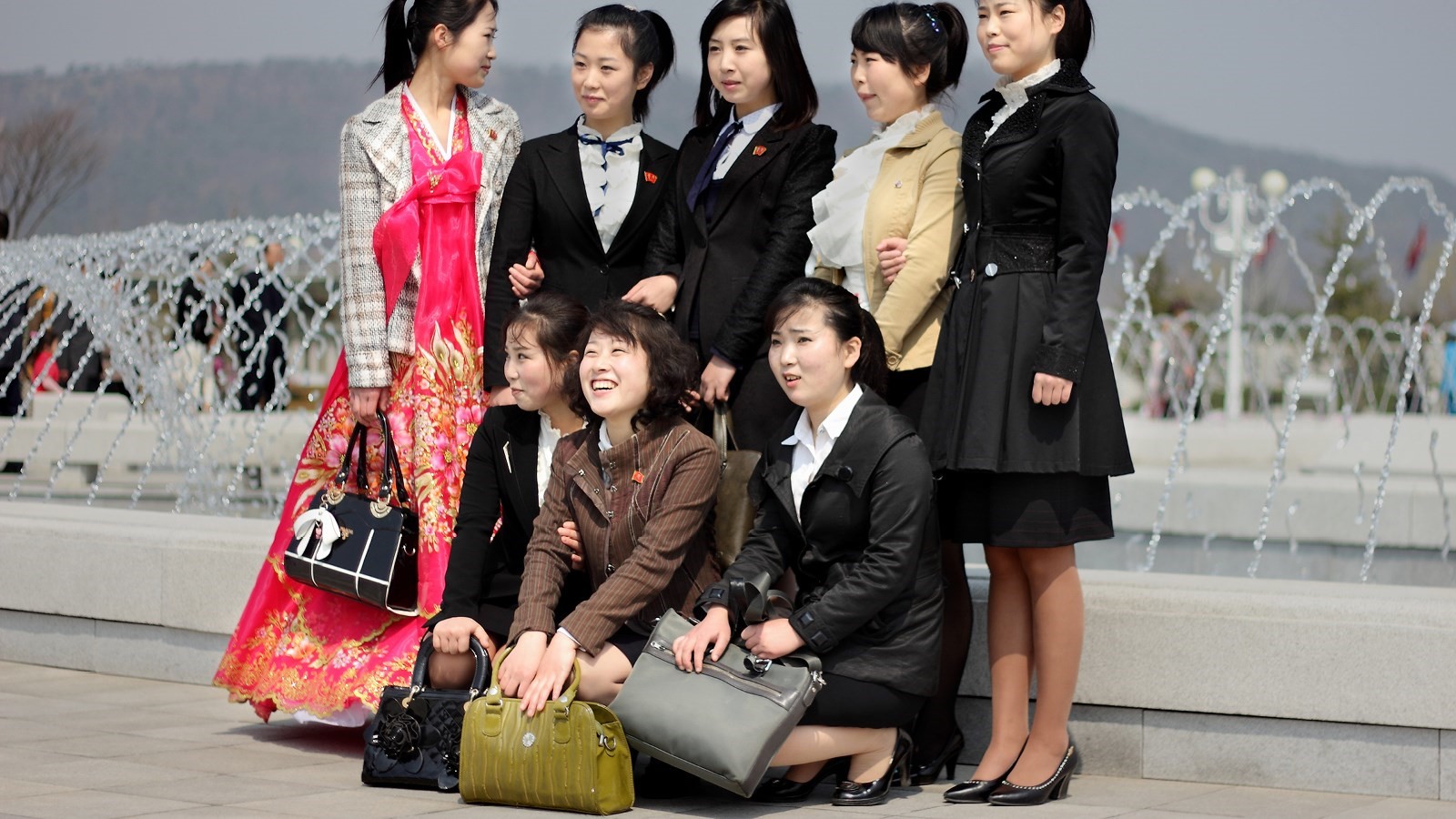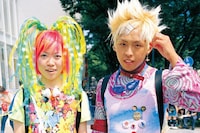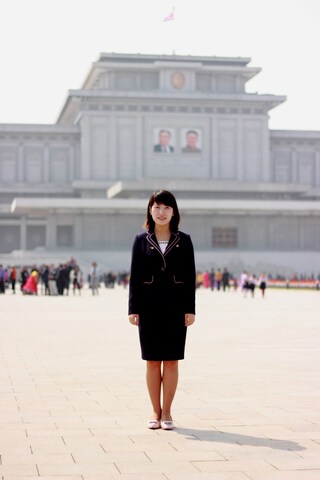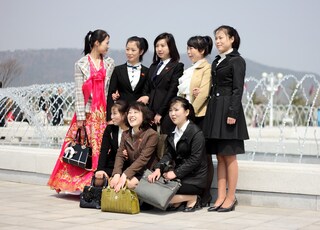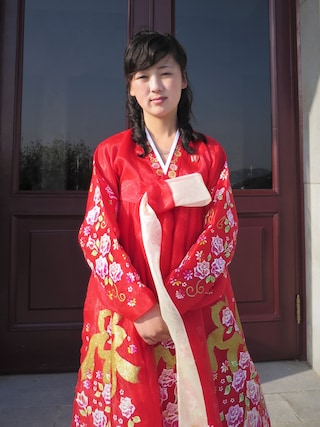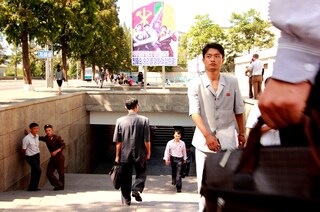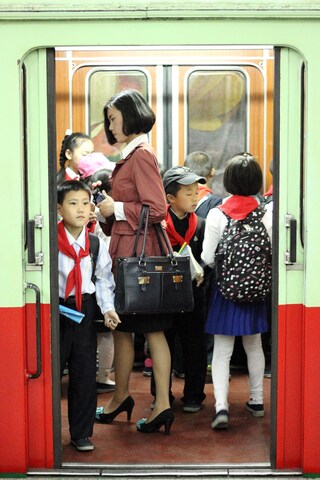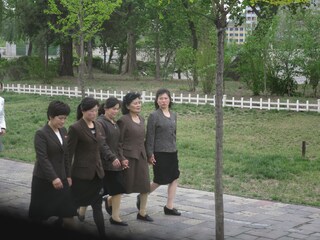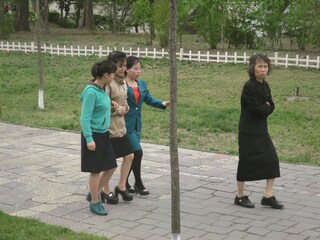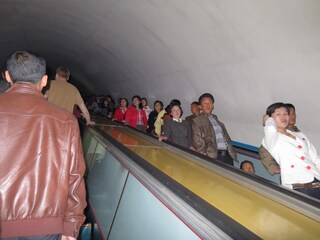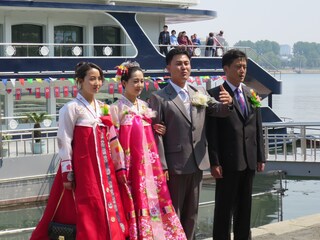Short skirts, blue jeans and smuggled designer goods: what the rise of fashion means for the future of the hermit kingdom
When you first arrive in North Korea, as the bus carries you from Pyongyang Sunan International Airport into the capital city, the first things you notice are the orderly streets devoid of litter, the architecture that combines the monumental with the mundane, and the almost complete lack of shops and advertisements. Another glaring difference is the uniformity of the clothes that people wear; the fashion seemingly plucked from 1950s imagery of a Korean socialist utopia. Except this is reality and 2015. The sense of being on a giant movie set, with people wearing prop costumes, is the uncanny feeling you carry when walking around the surreal streets of Pyongyang. For North Koreans however, this is simply their daily life, and although the fashion appears to be a conformist vision of communist drabness, it is in fact changing – and changing fast. To outsiders, a North Korean woman wearing high heels, make-up and carrying a designer bag might seem ordinary, but those minor details speak volumes about a society that is subtly breaking new cultural ground, while still remaining heavily controlled.
The North Korean government exerts an enormous amount of control and influence on the lives and decisions of its people. One of those controls is fashion, or more simply, how people are allowed to dress. The reason, according to James Pearson, a Reuters correspondent based in Seoul and co-author with Daniel Tudor of North Korea Confidential, is to impress upon the people that they are not an individual, but a cog in a bigger machine. “North Korea is a system which emphasises ideological single-minded unity,” explained Pearson. “It is a theatre state, to which the people are expected to all play a part.”
But he adds that North Koreans, like people across the world, use fashion to try to stand out – especially the young. “Young North Koreans have the same vices, desires and ambitions as a lot of young people in any other society – including the need to look, and feel, sexy.” The chapter in his book focused on fashion trends contains a revealing quote from a young North Korean woman, talking about a trend for flared skinny jeans that “make your legs look slim and good so you can show off” – a quote that echoes the language used by women to describe the liberating effects of the swinging 60s when fashion suddenly exploded, mirroring rapid changes in society. Paving the way as the most visible trendsetter is Ri Sol Ju, wife to North Korea's leader Kim Jong Un. As first lady, Ri is often seen at public events, where she wears high heels and form-fitting clothes, setting a fashionable example. As a fairly popular figure in North Korea, many young women strive for a similar look.
But North Korea still has strict limits when it comes to sartorial expression. Jeans for example have to be black (and preferably half-disguised with a long coat), as blue denim is seen as a symbol of America, a country that, along with Japan, is a sworn enemy of the state and thus the people. Skirts must be knee-length; men’s hair must be short and dyed hair is unacceptable (although some get away with claiming brown hair to be their natural colour). Until very recently, bright colours, high heels, earrings and any kind of tight clothing were almost never seen, especially with the fashion police patrolling the streets.
“Jeans have to be black (and preferably half-disguised with a long coat), as blue denim is seen as a symbol of America, a country that, along with Japan, is a sworn enemy of the state and thus the people.”
In North Korea, fashion crimes are literally a crime. Enforced by zealous members of the Kim Il Sung Socialist Youth League, these wardens, usually students, will upbraid anyone seen to be contravening state regulations or social convention. Punishments include public shaming, self-criticism sessions and in extreme cases a period in a labour camp. However a transgression can usually be sorted out with a bribe. These days more and more people break the rules, and in some parts of the country (such as the port city of Chongjin) citizens are ever more daring as they compete to be trendy and flaunt economic status. Chongjin, the country's third largest city, is in fact famed for its fashion-forward culture. As a port city and an important trading hub Chongjin has the distinction of being the first place where foreign fashions arrive, as well being notably looser when it comes to public order (Pyongyang is much more controlled, it being the capital and seat of power).
The change in this aspect of North Korean society has numerous factors, chief among them are a growing middle class and increasing exposure to outside influences. Investment and trade from bordering China, whether sanctioned or black market, has seen an influx of goods flowing into North Korea. Many of the elite and those who have connections have been benefiting from the increased business, leading to a small but visible middle class in Pyongyang. Where once Chinese clothes were highly sought after, these days Japanese-made clothes, South Korean cosmetics and western luxury brands are the must-haves.
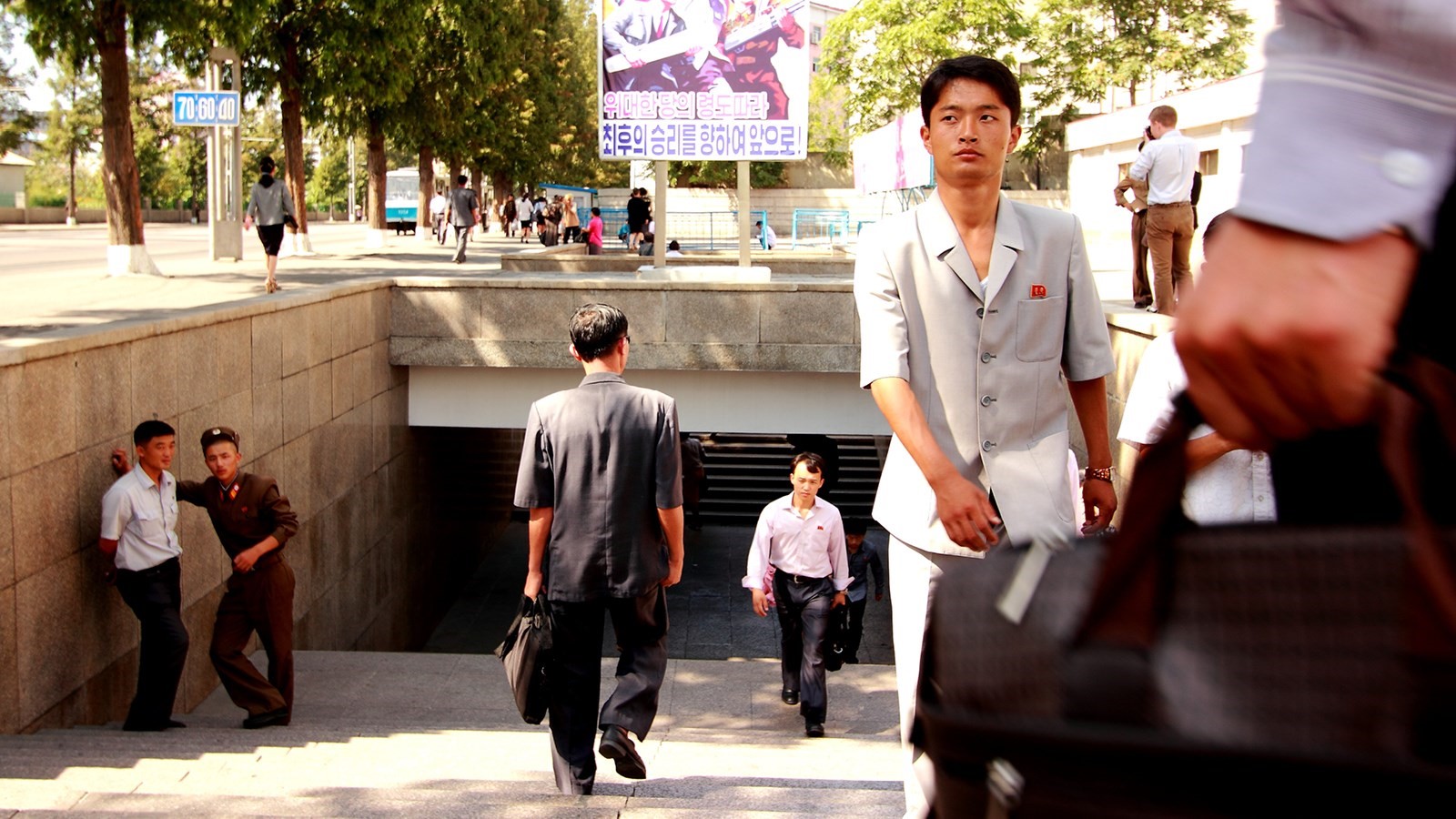
South Korean TV dramas are smuggled into the country and passed around on USBs – with the effect that their northerners are increasingly aware of their relative poverty, as well as differences in style and looks compared to their southern neighbours, arguably an even greater shock. Hollywood movies are available too on USB or via bootlegged DVDs. And increasingly tourists can be seen on the streets of North Korea as the country desperately tries to amass foreign currency (I went on one such tour in April 2014).
This contrasts hugely from just a decade ago. Je Son Lee, a North Korean refugee, wrote about fashion in her native country online. With relatives placed highly in the government, her family were able to afford Chinese products, and Lee writes about how her teachers gave her a lot of attention on her first day of kindergarten – “a day when I wore a dress with frills that had been made in China, and shoes with flowers on them”. As Troy Collings, who has spent several years at a travel company specialising in tours of North Korea, notes, North Koreans want to be trendy: “They do care about brands. They all know. I remember one (local) guide asking me to buy some foldable Ray Bans.” He added that this can lead to some overzealousness, citing an example of a Korean tour guide who wore shoes and trousers branded with the Apple logo. Collings is a New Zealander and runs a tour company; one of a number whose existence wouldn't be possible without the cooperation of the North Koreans, who enjoy a share of the profits.
However, Pearson comments that the Democratic People’s Republic of Korea is still a place where significant change is slow: “There are aspects of North Korea which are very normal, but it can still be an unreasonably repressive and brutal place, where not conforming can cost you your head.” But, he adds: “Then again, I did recently see a picture of someone wearing blue jeans in Pyongyang. That would've been unheard of several years ago.” Things certainly have changed since the days of Kim Jong Il and his green zip-up suit – a style that had been in vogue among men who wanted to project an image of power, according to Pearson’s book. Nowadays, it’s considered out-of-date.
Lead image: Photography Shane Horan (YPT). Lu-Hai Liang is a freelance journalist based in Beijing. He went to North Korea in April 2014. He did not use the tour company mentioned in the article.
